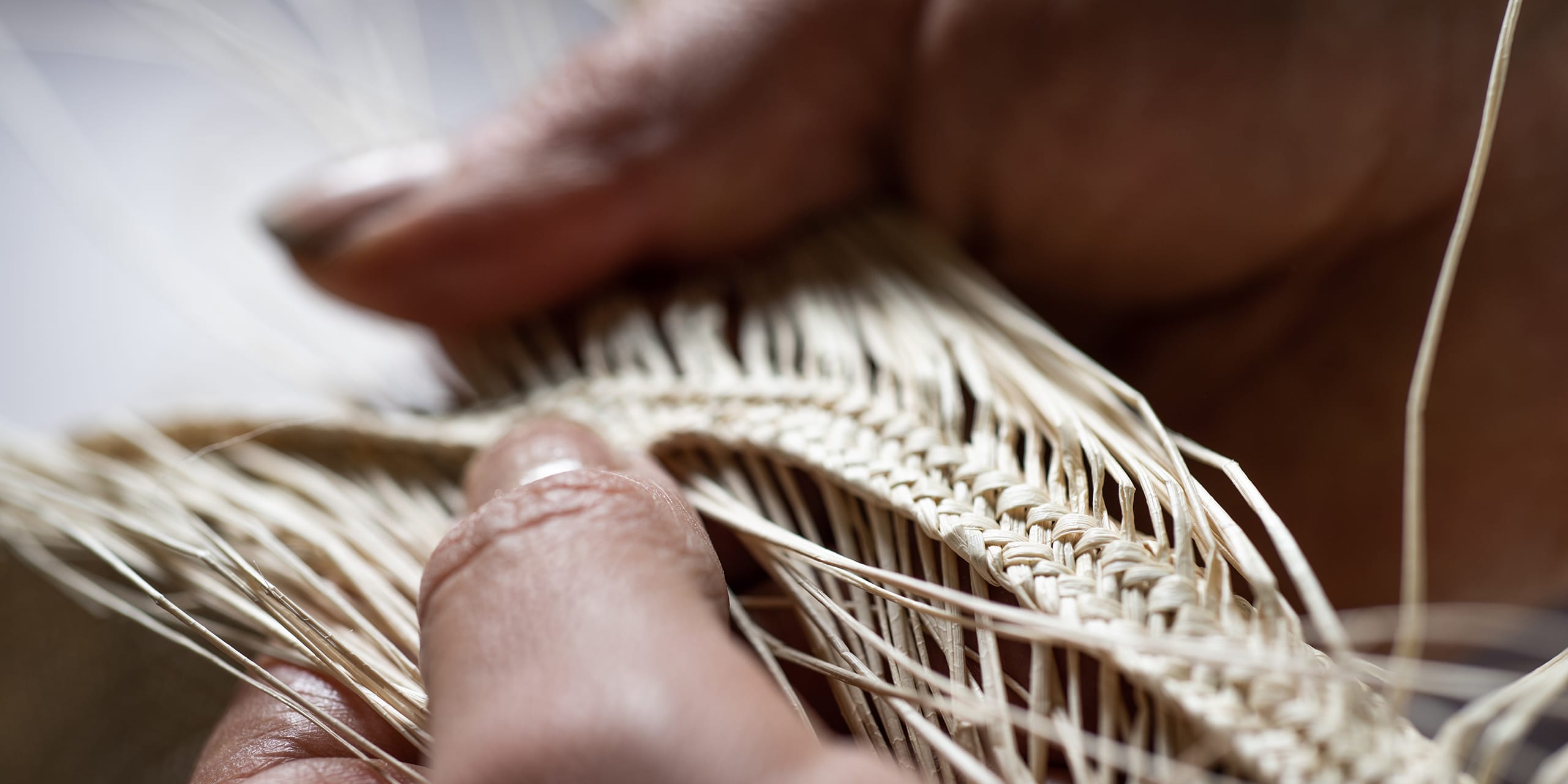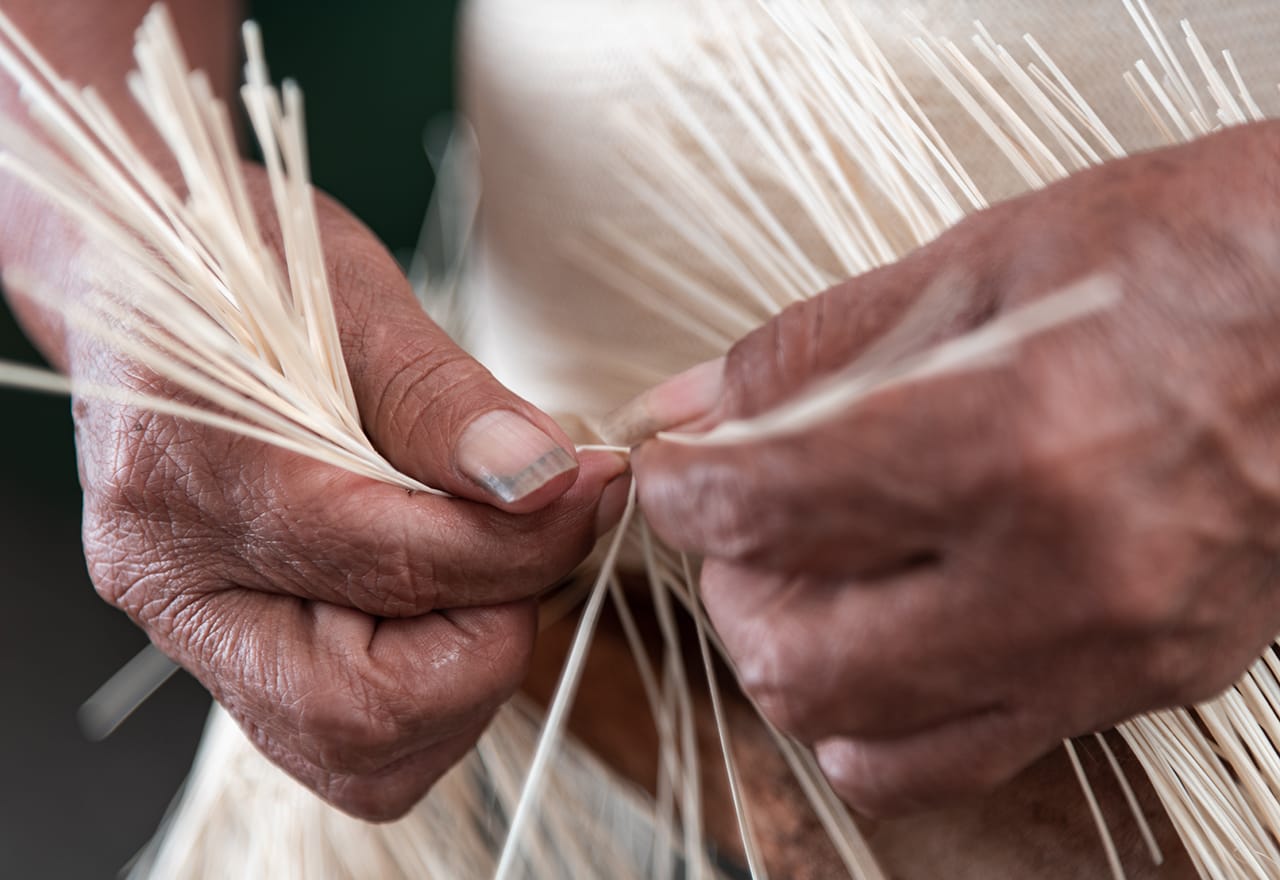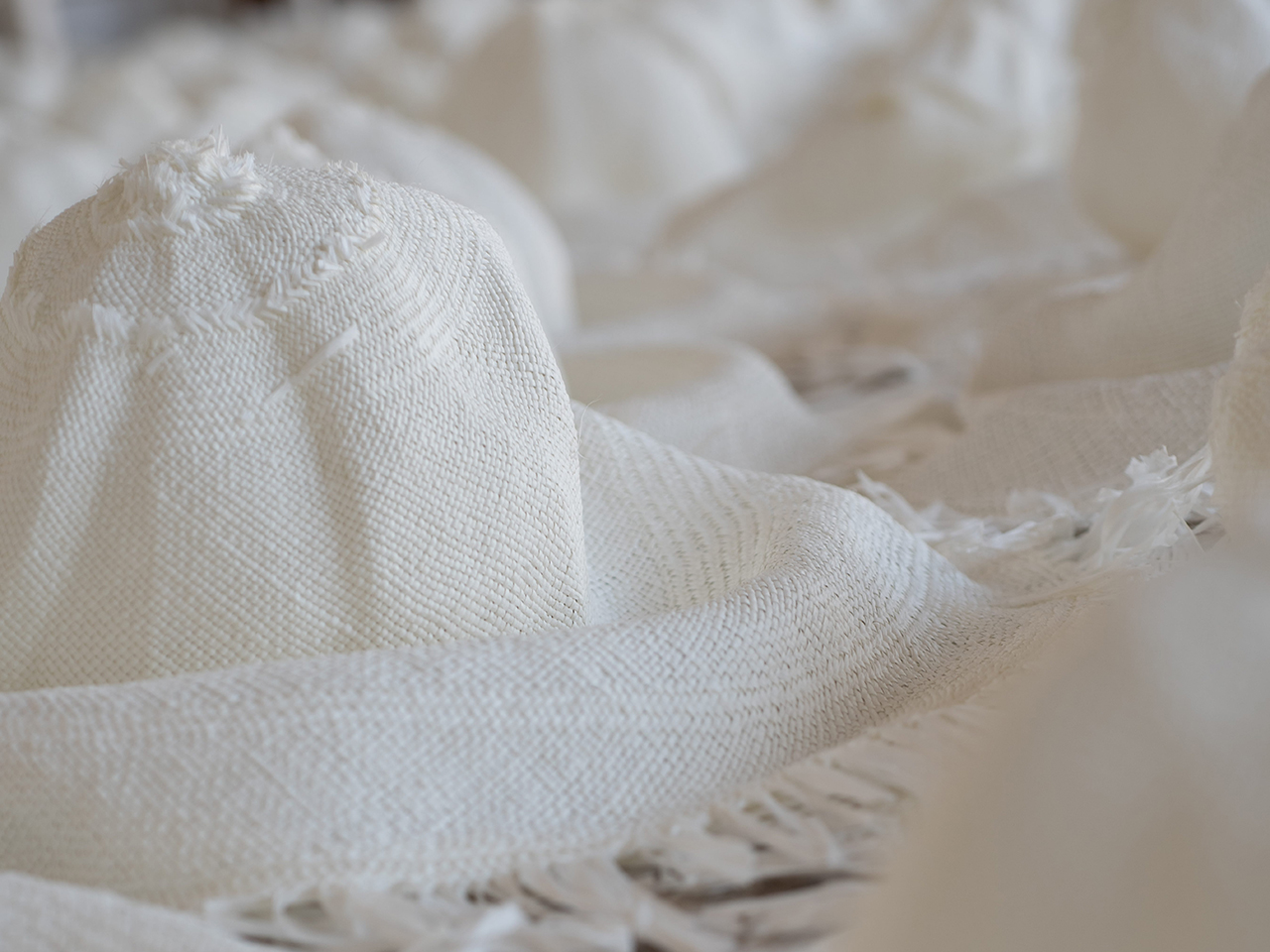Iconic and essentialTHE PANAMA HAT, ONE NAME FOR QUITE DIFFERENT LEVELS OF QUALITY
Since it is more about material than shape or design, the Panama hat can be made using different weaving methods from the simplest to the most complex that guarantee their quality. However , by opposition with a lot of exceptional accessories from arts and crafts, no universal scale, no standardized grading system make it possible to determine the quality of a Panama hat and there are nearly as many methods of classification than there are retailers.
Some use a grading system from 1 to 20, others give designations such as ‘FinoFino’ and ‘Superfino’ but even within these designations the characteristics they refer to are not the same and change according to the retailer and including quite disparate qualities. And yet some norms exist that enable to qualify the requirements prior to the manufacture of hats and that make the Panama an iconic and essential item out of time and out of fashion. These are also the reasons why there are so many price differences.







